Foreword
In the food industry, increasing attention is being paid to reducing food loss in order to create a sustainable society. There is a focus on institutionalizing HACCP, a food hygiene management method, for food business operators. In recent years, extension of consumption and expiration dates as well as prompt responses to customer complaints have emerged as urgent issues. In modern society, where consumers are highly concerned about food safety and security, when a food incident occurs due to a microorganism, it is necessary to quickly identify the causative microorganism and provide further information . Subsequently, appropriate measures must be taken to ensure food safety. However, conventional microbial identification methods and strain discrimination methods require the input of highly trained professionals to arrive at a final decision and hence are time consuming.
To overcome this problem, we are using matrix-assisted laser desorption/ionization-time of flight mass spectrometry (MALDI-TOF MS), which is now used as a bacterial species identification technology in the clinical field . We aim to apply this technology in the food industry as a quick, simple, and low-cost identification method that enables the identification of microorganisms that present concerns in the food industry. In the future, we hope to form a base for research and information dissemination of food-related microorganisms.
Background of the food industry
In order to reduce food contamination incidents caused by microorganisms, it is important to qualitatively and quantitatively evaluate the microorganisms introduced into foodstuffs from both the raw materials used to prepare them as well as the environments in which they are prepared. For the quantitative evaluation of bacterial counts, rapid methods for detecting adenosine triphosphate (ATP) produced by bacteria have been developed. On the other hand, for bacterial species identification, which is a qualitative evaluation, the mainstream methods are property tests , such as morphological observation of colonies or analysis of 16S rRNA genes for bacteria and 26S rRNA genes for fungi. However, each method requires a long time for identification, warrants a high degree of specialization in the work, and is expensive. For example, the rapid identification of bacterial species in a large number of samples (e.g. in time-series bacterial flora analysis) was not possible. This makes it difficult to analyze the bacterial flora at manufacturing sites and identify the microorganisms to be controlled.
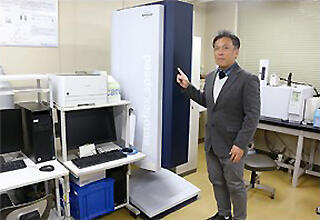
Background of identification techniques
In recent years, matrix-assisted laser desorption/ionization-time of flight mass spectrometry (MALDI-TOF MS), a mass spectrometry technique for microbial identification, has attracted increasing attention and has been widely used in the clinical field.
With conventional mass spectrometry techniques, it is difficult to ionize biopolymers, such as proteins, and mass spectrometry of biopolymers is considered difficult. However, in recent years, by mixing and crystallizing a sample with a small organic molecule (matrix molecules) that absorb laser light, mass spectrometry has become possible without decomposition, even in biopolymers. Ribosomal proteins, which are highly conserved across species, are the main target for microbial discrimination, and spectral data in the 2000 to 20000 Da (daltons) range are used for identification. The so-called fingerprint method, which enables the identification of bacterial species based on the similarity of spectral patterns without assigning each peak of spectral data to a specific protein, is the mainstream method of identification. In fingerprint tests carried out in criminal investigations, the fingerprints left at the crime scene and fingerprints collected from the suspect are compared against fingerprints in a database in order to identify the suspect. Similarly, we seek to identify bacteria using fingerprints (mass spectra) obtained from known food-related microorganisms.
Challenges and ideas for activities
Equipment manufacturers have already provided databases and microbial identification software for clinical use. However, identification cannot be performed unless the data from the food-related microorganism to be identified are registered in the spectral data stored in the database. Indeed, many species of bacteria isolated from raw food materials and manufacturing environments have not been registered in the database, resulting in very low identification rates. Given the nature of the food industry, each company uses a wide variety of raw materials, such as fish, shellfish, meat, dairy products, vegetables, and fruits, in their products, and nearly every company manufactures multiple products belonging to various food categories. Thus, there are significant limitations to creating comprehensive in-house databases. Given this situation, we believe that expanding the database dedicated to food-related microorganisms is indispensable for applying this method in the food industry. We have decided to form a consortium together with food companies, link the bacterial species names obtained by genetic analysis to the bacteria isolated from raw materials and environments that are not registered in the database, and collect and share the mass spectrum data.
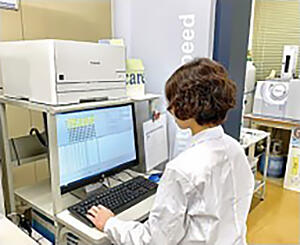
Formation of a consortium
We proposed sharing such a database with food-related companies that own MALDI-TOF MS devices. With the support of many companies, a consortium consisting of 13 organizations, including Kyushu Sangyo University, was formed. Database sharing started in 2020, and the "Food Microbiology Control Center" was opened at Kyushu Sangyo University in 2021(Fig. 1). Data sharing is currently carried out over e-mail, but in 2023, a dedicated server will be set up in Kyushu Sangyo University, and a membership site where consortium members can freely access the data will be put into operation. So far, data of approximately 150 strains have been shared; however, in the future, we will accelerate the acquisition of strains and the sharing of related data. In addition, since the mass spectra stored in the database are used for identification by the consortium members, strict standards for acquisition methods and quality control are also important. For this reason, standardization and quality control of the methods for microbial identification via MALDI-TOF MS in the food industry will also be developed. Furthermore, a risk profile of food-contaminating bacteria, including bacteria causing food poisoning, was created. For example, we plan to develop and share a risk database, where members can share information that can be applied to predictive microbiology, such as information that leads to investigation of the cause and growth characteristics, possibilities of high risk of contamination from various raw materials and manufacturing environments, etc. We believe that the creation of risk profiles for various types of food-contaminating bacteria will greatly contribute to the food industry in terms of speeding up commercialization.
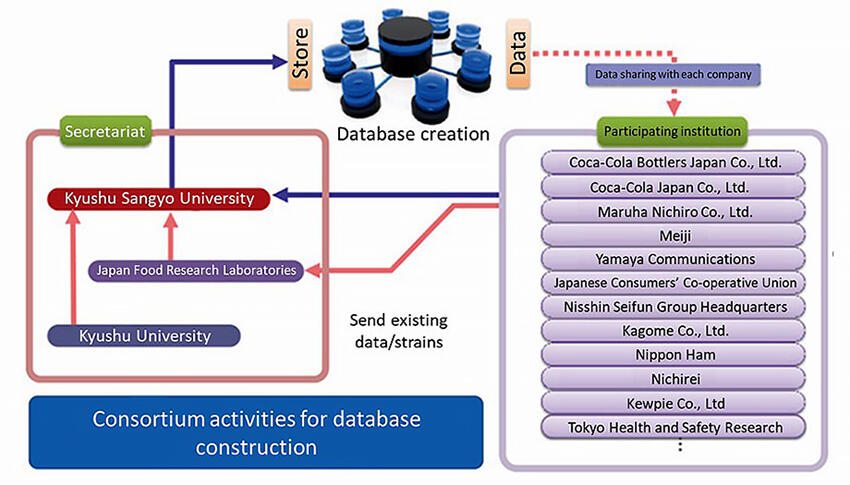
Expected performance and future prospects
The center will play an important role in not only promoting consortium activities but also supporting the local food industry. As part of this, we are providing technical support to local companies in collaboration with the Fukuoka Industrial Technology Center Biofood Research Institute . This support has enabled identification of the bacterial flora status of products in detail, leading to the extension of shelf life. We wish to extend support to local food companies of all sizes in the future. As for our future outlook, we would like to expand the scope of activities so that the "Food Microbiology Control Center" can serve as a major support base that collects data on food-contaminating microorganisms in Japan (Fig. 2).
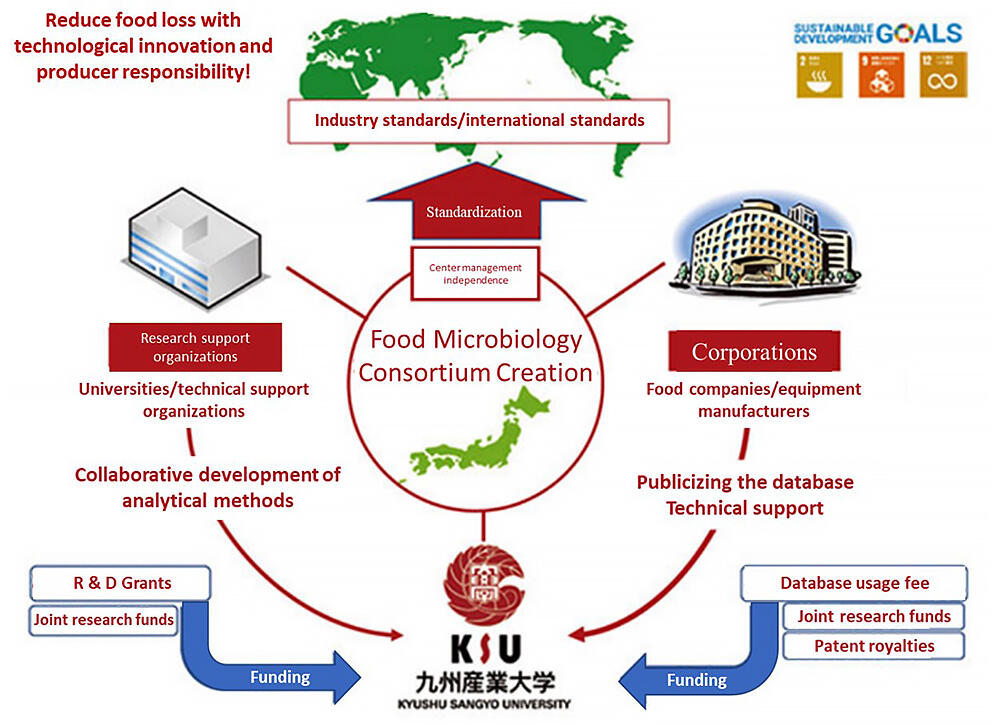
By adding information on important food-related microorganisms to the database, we aim to improve the technological capabilities of food companies to ensure food safety and aim to standardize the database that could serve as a new framework for food risk assessment in the industry.
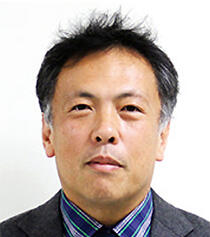
Motokazu Nakayama
Professor, Food Science Course , Faculty of Life Science, Kyushu Sangyo University




